COIT20249 - ICT Portfolio: Annotated Bibliographies on 3D Printing
VerifiedAdded on 2023/06/13
|7
|792
|275
Portfolio
AI Summary
This ICT portfolio presents annotated bibliographies focusing on 3D printing technologies and their applications, particularly in rehabilitation engineering and medicine. The first journal explores the use of 3D printing in customizing medical products and its potential in surgical planning, prostheses, and implants, emphasizing the need for interdisciplinary collaboration and ethical guidelines. The second journal discusses 3D printing's innovative role in manufacturing, its potential to revolutionize medicine by creating organs, and its future impact on pharmaceutical companies. Both annotations include recommendations for future research and integration of 3D printed solutions, highlighting the importance of evidence-based medicine and careful threat analysis. Desklib provides a platform for students to access similar solved assignments and past papers for academic assistance.
1 out of 7
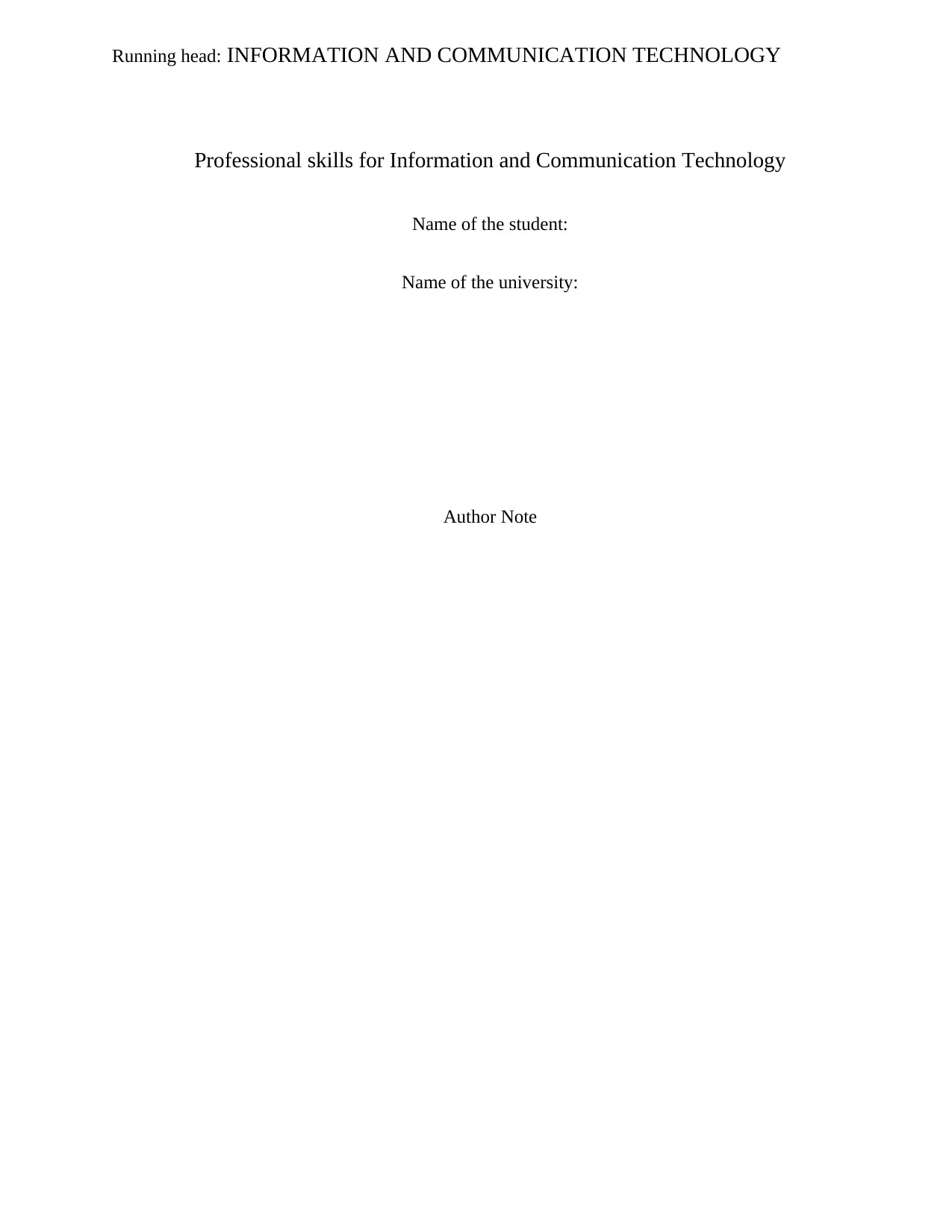
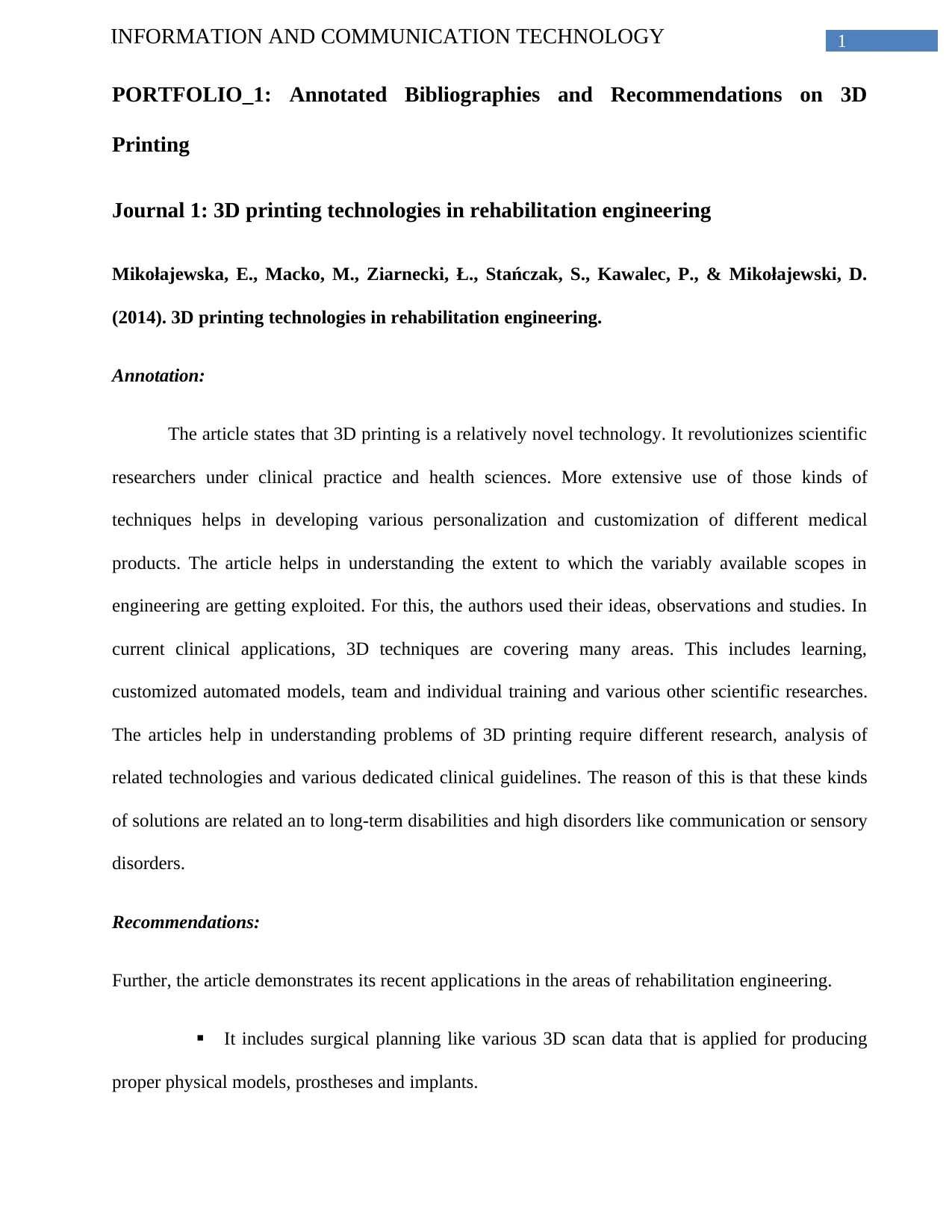
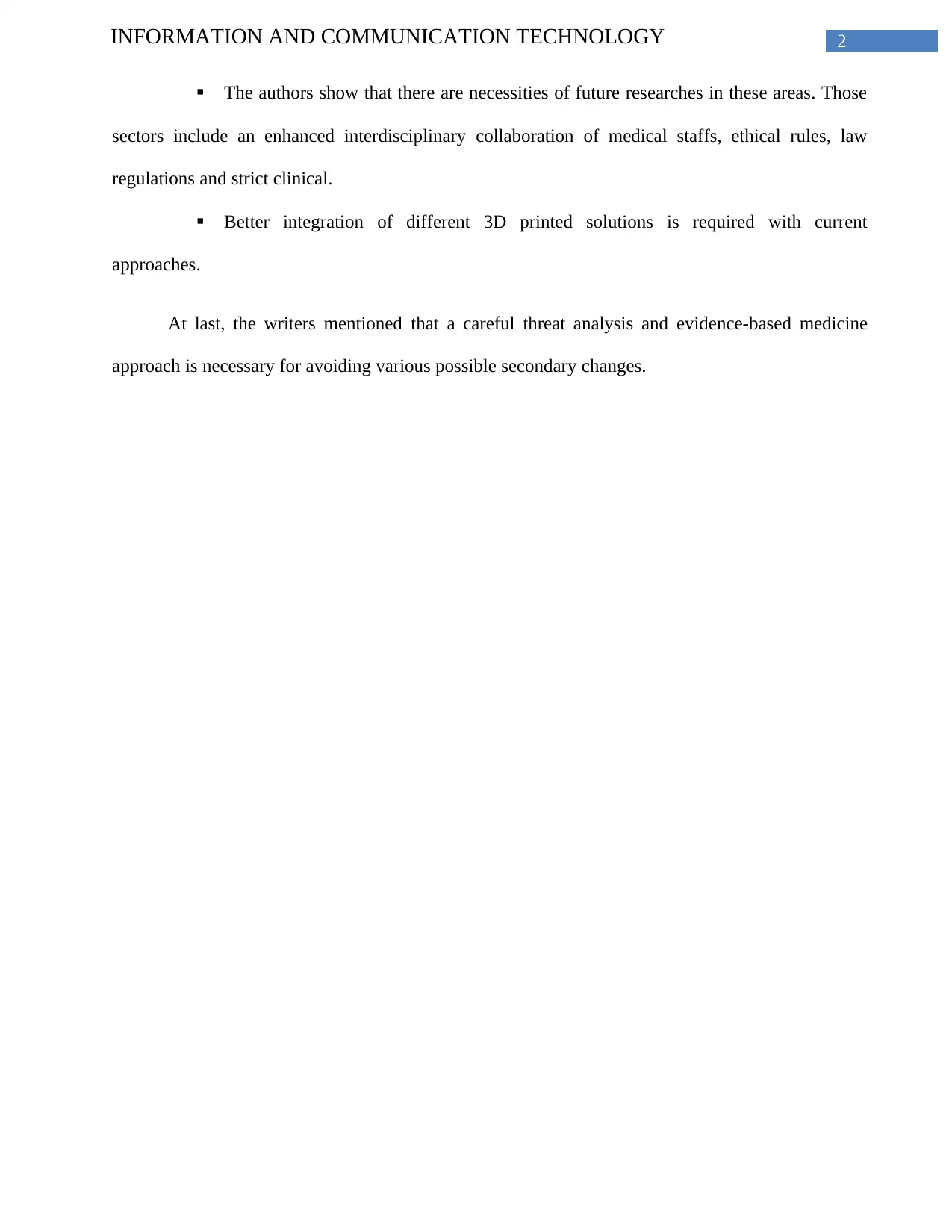

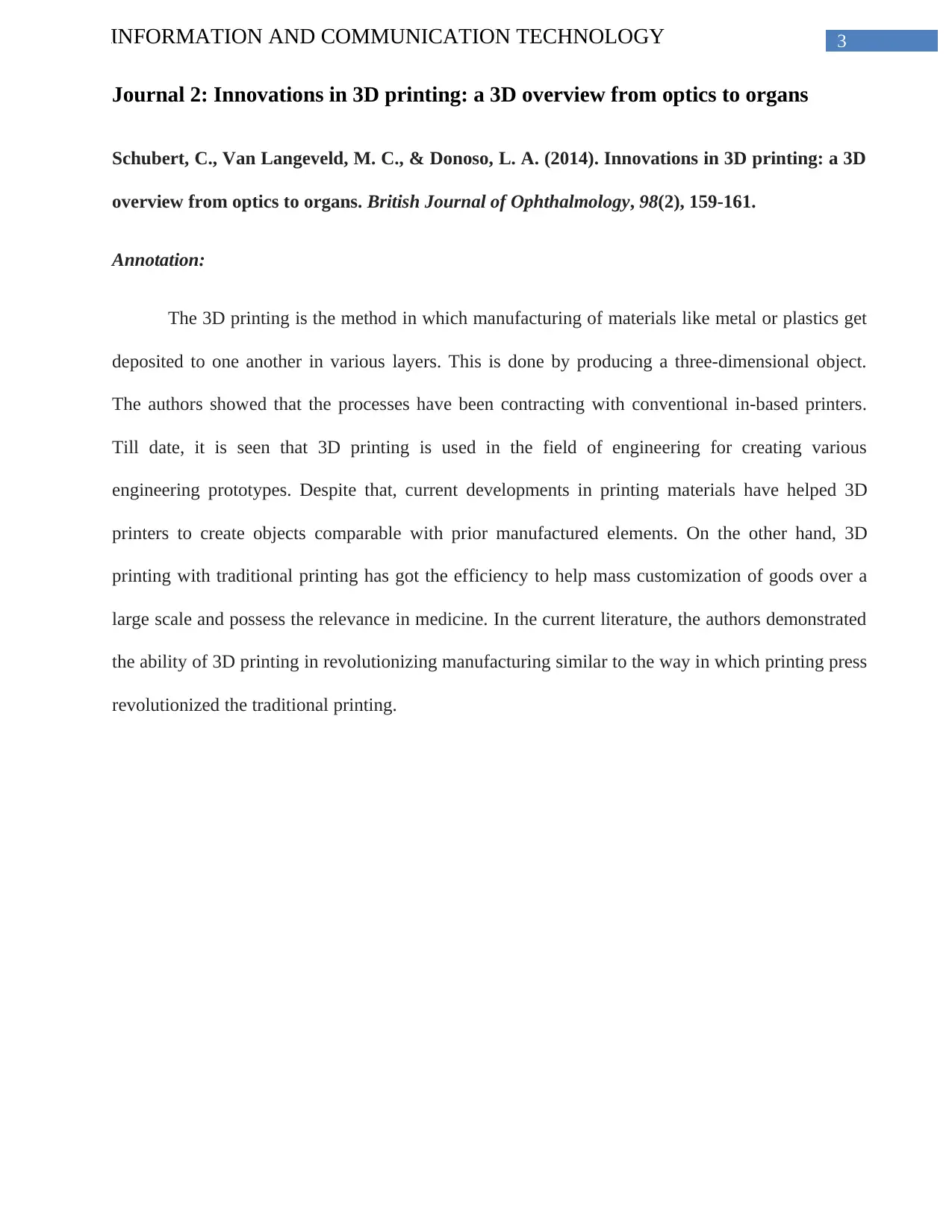
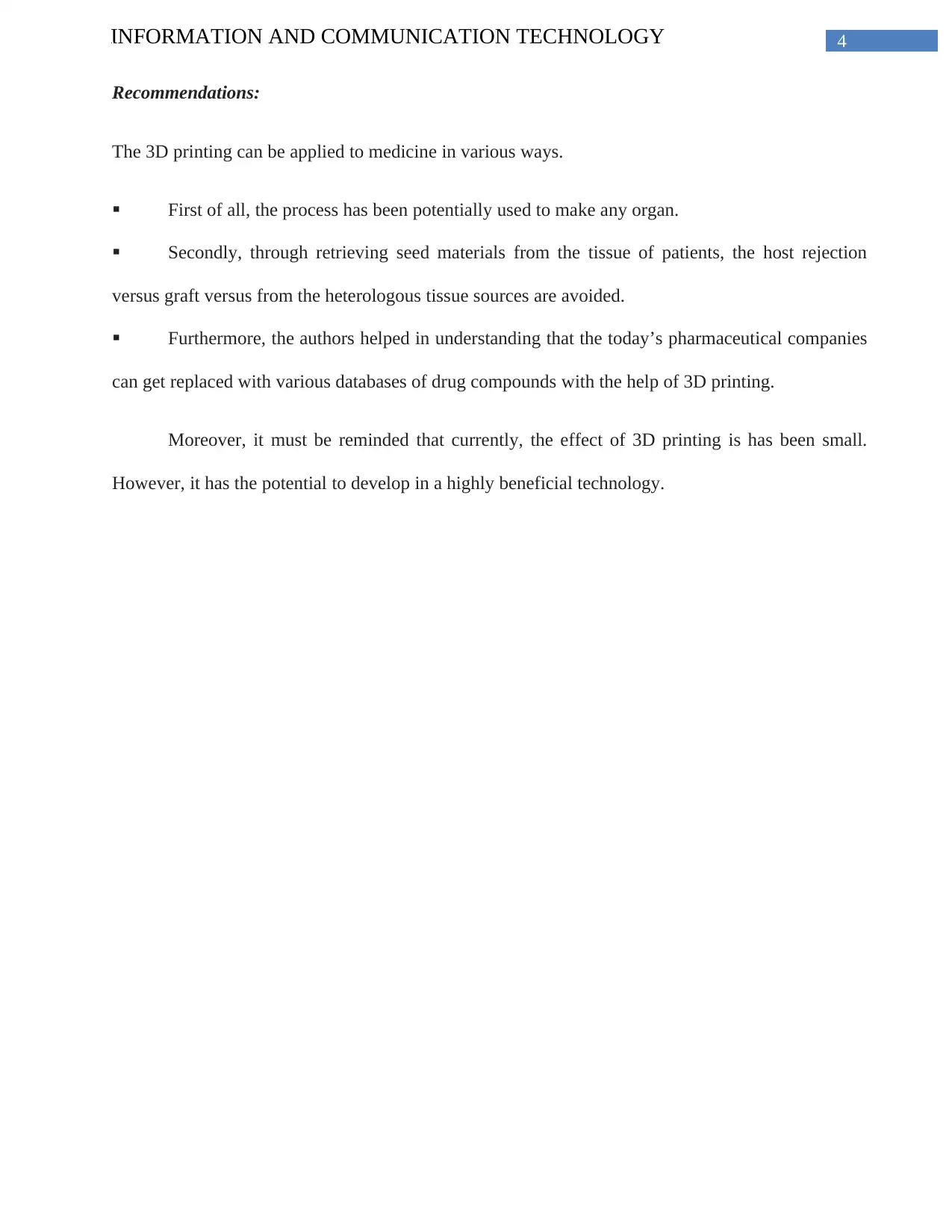
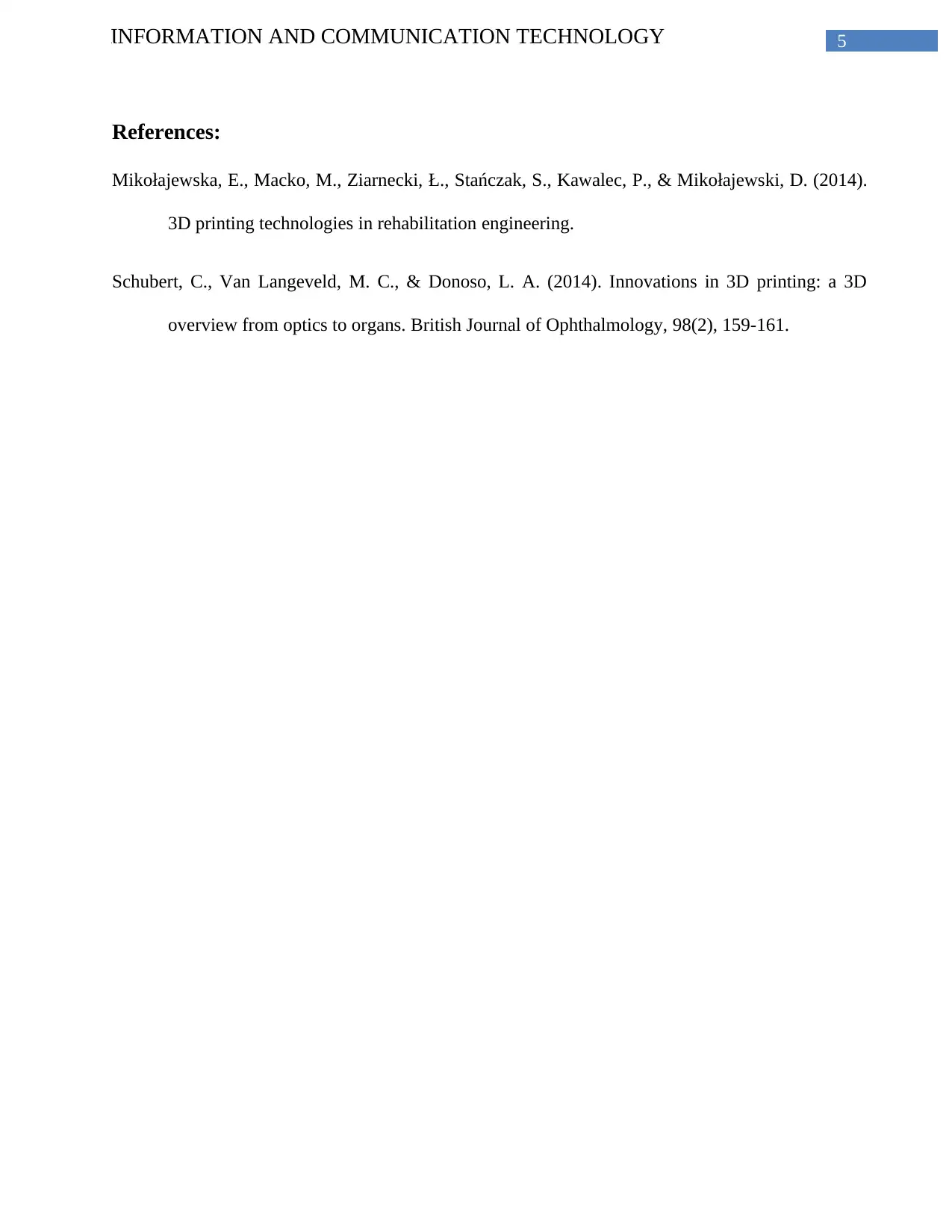







![[object Object]](/_next/static/media/star-bottom.7253800d.svg)